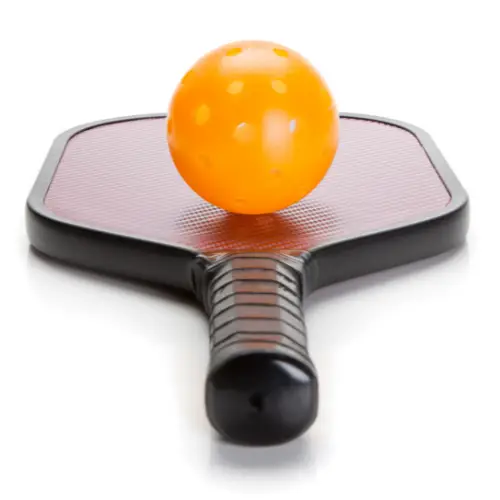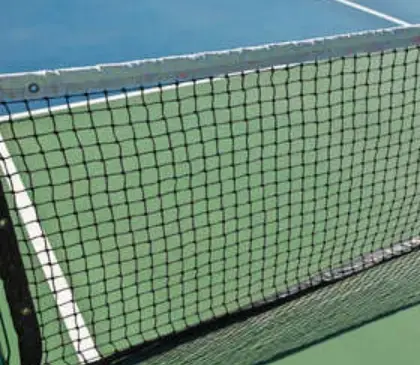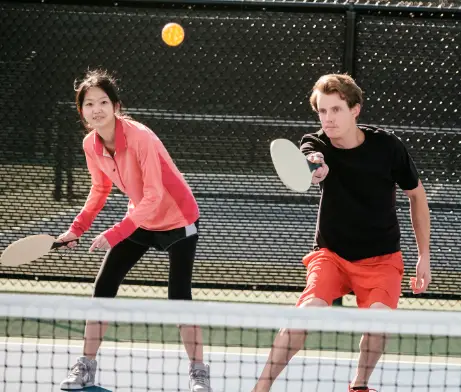In a pickleball match, a serve initiates each point. The service is a crucial shot in every point of pickleball, despite the fact that it might be a fairly simple shot. In a pickleball match, ace serves seldom result in points being scored, yet serves that is knocked out of bounds frequently result in missed opportunities. Additionally, if you develop a good, strategic serve on the pickleball courts, you could be able to offer yourself an advantage over your rivals.
What Are The Serving Rules In Pickleball?
The left or right side of the center line must be used when serving from behind the baseline. The ball must be served diagonally across the court into the serve area once the server has called the score. Every serve must be delivered beneath the waist and with both hands.
The non-volley zone and the line in front of the serve area may not be touched by the ball once it has landed there. The additional lines are regarded as in. If they succeed, the server keeps going and must switch sides after each serve.
Singles Serving Rules
Every single player in singles serves till they score a point. After each serving, you must change which side you are serving from. If your singles match score is equal, you serve from the court’s right side. Serve from the left if your score is odd. Say your score before your opponent’s score when the score is called.
Doubles Serving Rules
Prior to the serve switching back to the opposite side, each member of a team has a chance to serve. The second server for the first team is bypassed at the beginning of the game. The serve begins from the right side after each side-out. After each service, the serve changes sides. The rules governing who serves first and from which side depend on the player’s position. Playing alongside a more seasoned player who can demonstrate is the best way to learn.
Two-Bounce Rule
Pickleball features a variety of distinctive regulations that are intended to keep the game fair and enjoyable. The two-bounce rule is one such regulation. According to the two-bounce rules, the server must be returned with a groundstroke as well. Bob’s serve must therefore bounce for Alice to be able to return it. Then, before returning Alice’s return, Bob must wait and watch it bounce.
Players are then permitted to volley the ball after the serve and the first return. You strike the ball in a volley just before it hits the ground. A groundstroke is made if you let the ball bounce first.
How To Serve In Pickleball
- Stand behind the service line, facing the opposite court.
- Hold the pickleball paddle in your dominant hand and the ball in your non-dominant hand.
- Toss the ball into the air, slightly above your head and in front of you.
- As the ball starts to descend, swing your paddle upwards and make contact with the ball, striking it firmly towards your opponent’s side of the court.
- After making contact with the ball, follow through with your swing and step forward towards the opposite court.
- Watch the ball as it travels across the court, and be ready to move to defend against any return shots from your opponents.
- If your serve is successful and lands in the correct service box on your opponent’s side of the court, you score a point. If your serve is not successful (e.g. it goes out of bounds or into the net), your opponents receive the serve.
- Continue to serve until one team reaches 11 points, with a minimum lead of two points. If the score is tied at 10-10, the game continues until one team has a two-point lead.
What Are The Three Types Of Advanced Serves?
Once you’ve played pickleball a few times, you might start to question how to get better. The serve is a crucial component of the game because you can only score on your serve. I recently spoke with several of the more experienced players at our neighborhood gym to get serving advice.
In pickleball, there are three different kinds of serves. Each of these methods has benefits. Changing up your serves can help you win more games and keep your opponent guessing.
- High Soft Serve
When you hit a deep, high arc into your opponent’s court, you are serving high-soft. Any skill level, from beginner to level 5, can employ this serve (read more about pickleball levels). This serve has a lot of diversity, which makes it excellent for altering the game’s tempo and putting your adversary on the defensive.
Your high-soft serve can be directed toward the front or back of the serving area. You can use this to create
- Power Serve
The power serve is deep, quick, and low into the court of your opponent. You can shoot straight at your opponent or at the corner of the forehand or backhand for variety. Although the power serve is more difficult to execute than the high-soft serve, it is a crucial weapon if you want to increase your game.
- Soft Angle Serve
The third and final serve type to vary the game’s rhythm is the soft angle serve. This shot lands close to the sideline and the kitchen line. The ball should leave the court on the bounce. Because the target you are aiming for is so small, the soft angle shot is the hardest of the three main serves.
Conclusion
On the pickleball court, confuse your opponents by changing up your serves to keep them on their toes. Changing up your serves can give you the upper hand in your competition. You might even observe that some serves are more difficult for them than others.
If you want to keep improving your pickleball game once you have mastered one reliable serve, add all of this additional uncommon pickleball serves to your repertoire.







